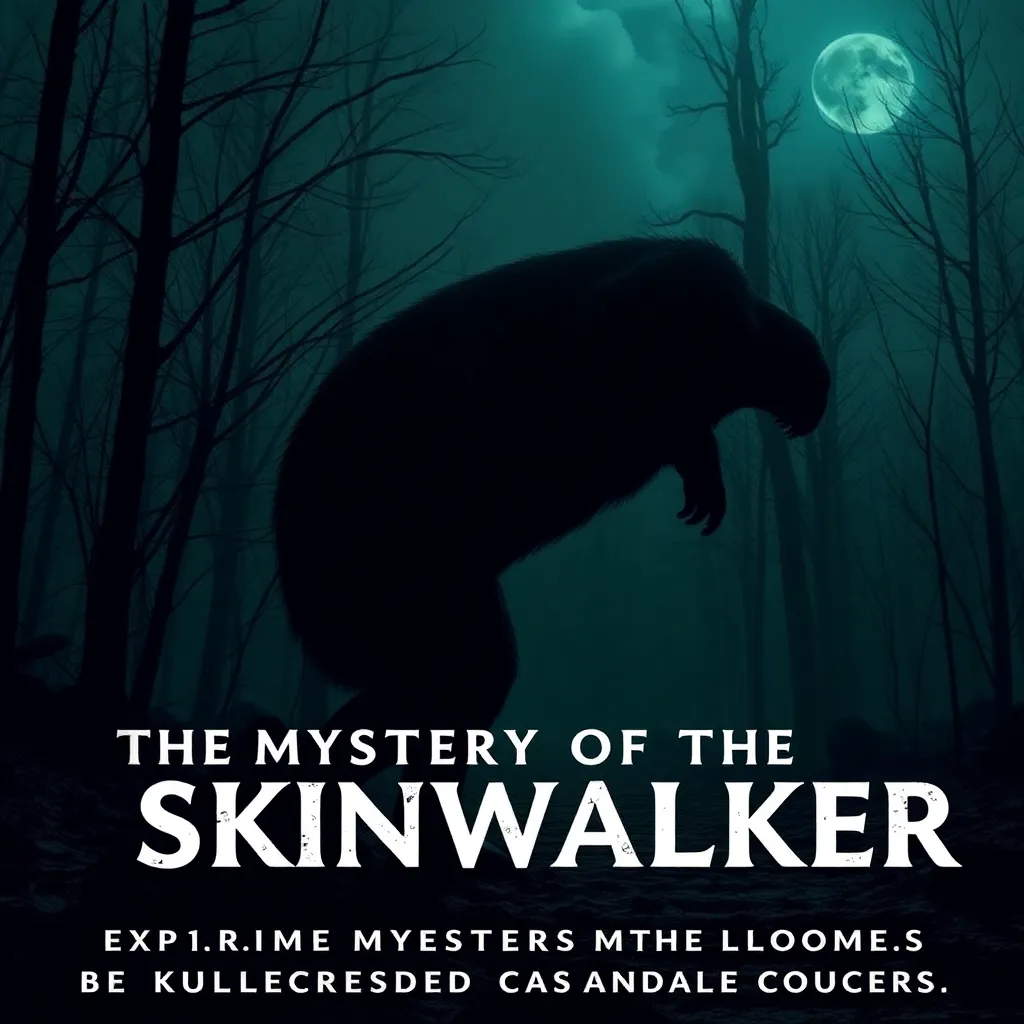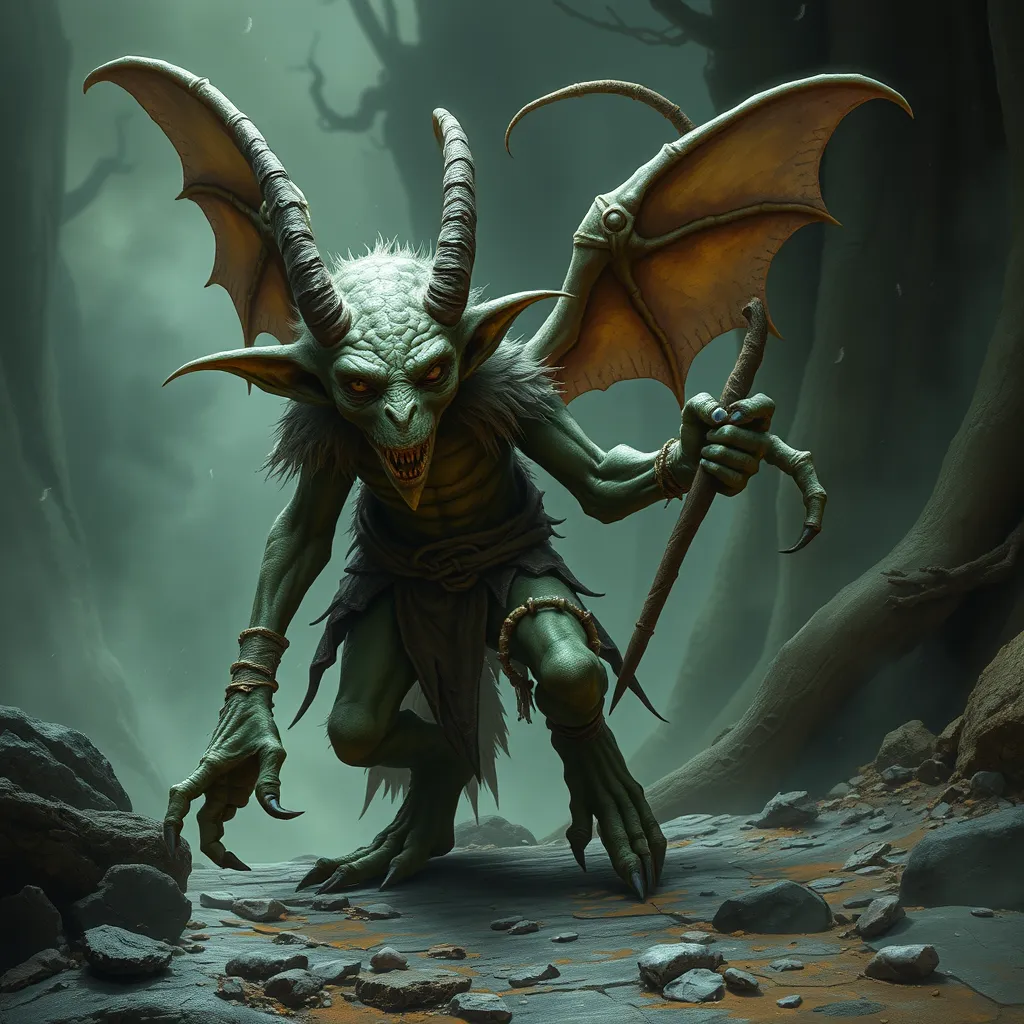The Mystery of the Skinwalker: Exploring Unresolved Cases and Encounters
I. Introduction
The term “Skinwalker” evokes a sense of eerie intrigue and cultural significance rooted deeply in Native American folklore, particularly within the Navajo tradition. A Skinwalker is described as a witch capable of transforming into various animals, often with sinister motives. This shapeshifting ability symbolizes the intersection of human nature with the animal world, embodying themes of fear, power, and the supernatural.
This article aims to delve into the enigmatic world of Skinwalkers by investigating unresolved cases and sharing personal encounters. By exploring the historical background, the nature of these encounters, notable unresolved cases, and the psychological aspects involved, we hope to shed light on this fascinating legend.
II. Historical Background
A. Origins in Navajo culture and mythology
The legend of the Skinwalker originates from the Navajo culture, where it is known as “yee naaldlooshii,” meaning “with it, he goes on all fours.” Traditionally, Skinwalkers are believed to be malevolent witches who can take on the form of animals. This transformation is said to grant them enhanced strength, speed, and the ability to evade capture.
B. Evolution of the Skinwalker legend over time
Over the years, the Skinwalker myth has evolved, often blending with other cultural narratives and media representations. As stories of encounters spread, the fear associated with Skinwalkers intensified, leading to caution within communities about discussing these beings openly.
C. Distinction between Skinwalkers and other mythical creatures
While Skinwalkers share similarities with other shapeshifting entities found in global folklore, such as werewolves and lycanthropes, their motivations and cultural significance are distinct. Skinwalkers are often linked with witchcraft and the violation of sacred taboos, setting them apart from more familiar creatures of Western mythology.
III. The Nature of Skinwalker Encounters
A. Common characteristics of reported encounters
Witnesses of Skinwalker encounters frequently report similar characteristics, such as:
- Unnatural animal behavior
- Sudden feelings of dread or paranoia
- Physical manifestations resembling animals, often with unsettling features
- Disorienting sounds or vocalizations that mimic human speech or animal calls
B. Psychological and emotional impact on witnesses
The psychological toll of encountering a Skinwalker can be severe. Many witnesses describe lasting feelings of fear, anxiety, and mistrust, impacting their daily lives. The trauma of the experience often leads to a reluctance to revisit the location of the encounter.
C. The role of fear and superstition in shaping narratives
Fear and superstition play a crucial role in the narratives surrounding Skinwalkers. The stories often serve as cautionary tales, reinforcing cultural boundaries and social norms. These narratives have been passed down through generations, evolving into a complex tapestry of beliefs and fears.
IV. Notable Unresolved Cases
A. Case study 1: The Legend of the Skinwalker Ranch
Skinwalker Ranch in Utah has gained notoriety as a hotspot for paranormal activity and Skinwalker sightings. Since the 1990s, the property has been linked to bizarre occurrences such as strange lights, unexplained animal deaths, and reports of shape-shifting beings. Despite numerous investigations, many of the claims remain unresolved, feeding into the legend.
B. Case study 2: Encounters in the Four Corners region
The Four Corners region, where Arizona, New Mexico, Colorado, and Utah meet, is rich in Navajo culture and lore. Residents have reported eerie encounters, with sightings of creatures that seem to shift between human and animal forms. These reports often include strange sounds and feelings of being watched, yet they lack concrete evidence, leaving many cases unresolved.
C. Case study 3: Eyewitness testimonies from modern times
Modern eyewitness testimonies continue to emerge, often from individuals who are skeptical of the legend yet find themselves facing inexplicable phenomena. These encounters share common features with traditional tales, highlighting the enduring nature of the Skinwalker myth. Some reports discuss encounters with entities that exhibit both human and animal traits, leaving witnesses perplexed and frightened.
V. Investigating Skinwalker Phenomena
A. Methods used by researchers and enthusiasts
Researchers and enthusiasts employ various methods to investigate Skinwalker phenomena, including:
- Field investigations and interviews with witnesses
- Analysis of local folklore and cultural narratives
- Utilization of technology, such as night vision cameras and audio recording devices
B. Challenges in verifying evidence and testimonies
One of the primary challenges in verifying Skinwalker evidence is the subjective nature of eyewitness accounts, which can be influenced by cultural beliefs and personal biases. Additionally, the remote locations of many encounters complicate efforts to gather physical evidence.
C. The role of technology in modern investigations
Advancements in technology have provided new tools for investigators. Drones, thermal imaging cameras, and sound recording devices are increasingly used to capture evidence in areas where Skinwalker sightings have been reported, yet definitive proof remains elusive.
VI. Cultural Perspectives and Interpretations
A. The Skinwalker in contemporary media and literature
In recent years, the Skinwalker myth has permeated contemporary media, appearing in books, films, and television shows. These portrayals often sensationalize the legend, sometimes straying far from its cultural roots in the Navajo tradition.
B. Comparisons with other cultures’ shapeshifting legends
Shapeshifting legends exist across cultures, from the werewolves of European folklore to the selkies of Celtic mythology. Each culture’s interpretation reflects its values and fears, illustrating the universal human fascination with transformation and the unknown.
C. The impact of cultural appropriation on the Skinwalker narrative
The appropriation of the Skinwalker narrative by popular culture raises concerns among Native communities. Misrepresentation and commercialization can dilute the cultural significance of the legend, transforming it into a mere entertainment trope devoid of its deeper meanings.
VII. The Psychological Aspect of Belief
A. The phenomenon of collective delusion versus individual experiences
The Skinwalker legend illustrates the complexity of belief systems, where collective delusion can emerge alongside individual experiences. Many witnesses find solace in shared narratives, reinforcing their perceptions and fears.
B. The influence of folklore on perception and reality
Folklore shapes how communities perceive the world, influencing interpretations of unexplained phenomena. The Skinwalker narrative, rooted in cultural traditions, serves as a lens through which individuals understand their experiences, often blending reality with myth.
C. Coping mechanisms for those who believe they have encountered a Skinwalker
Individuals who believe they have encountered a Skinwalker often develop coping mechanisms, such as:
- Seeking support from community members who share similar beliefs
- Engaging in rituals or practices to ward off evil
- Documenting their experiences to validate their feelings and encounters
VIII. Conclusion
In summary, the exploration of Skinwalker encounters reveals a rich tapestry of cultural significance, psychological impact, and unresolved mysteries. The enduring legend continues to captivate the imagination, reflecting deep-seated fears and beliefs found within and beyond Native American cultures.
The relevance of the Skinwalker in modern society speaks to humanity’s fascination with the supernatural and the unknown. By encouraging respectful exploration and dialogue surrounding the legend, we can foster a greater understanding of its cultural roots and contemporary implications.



